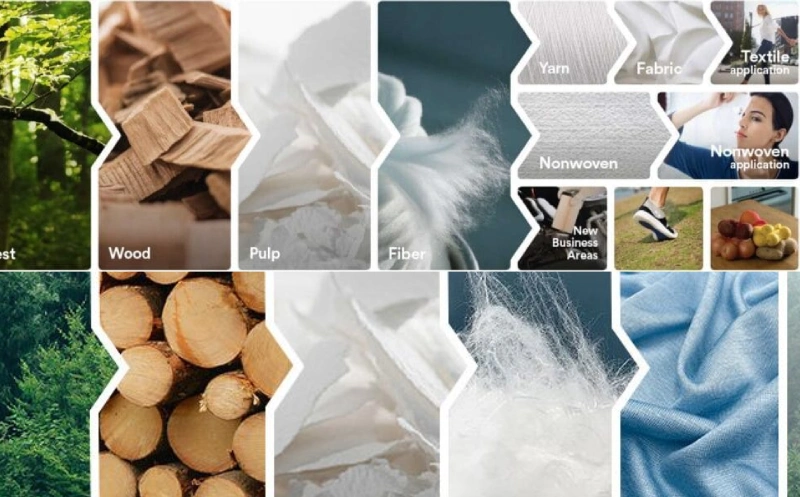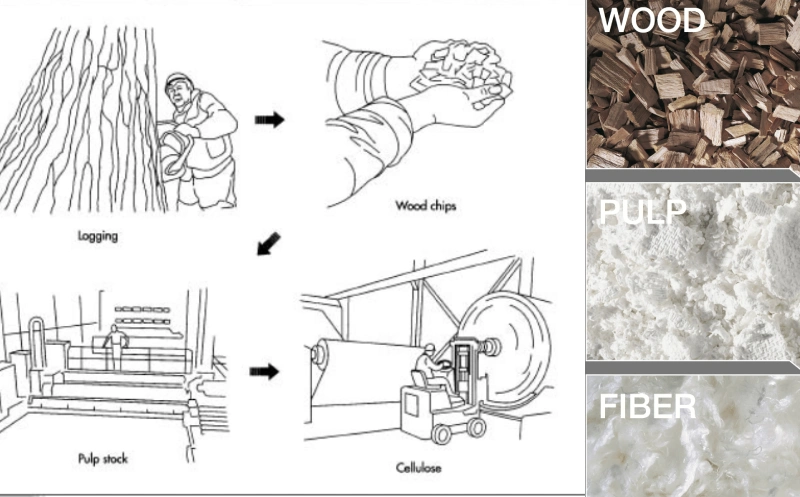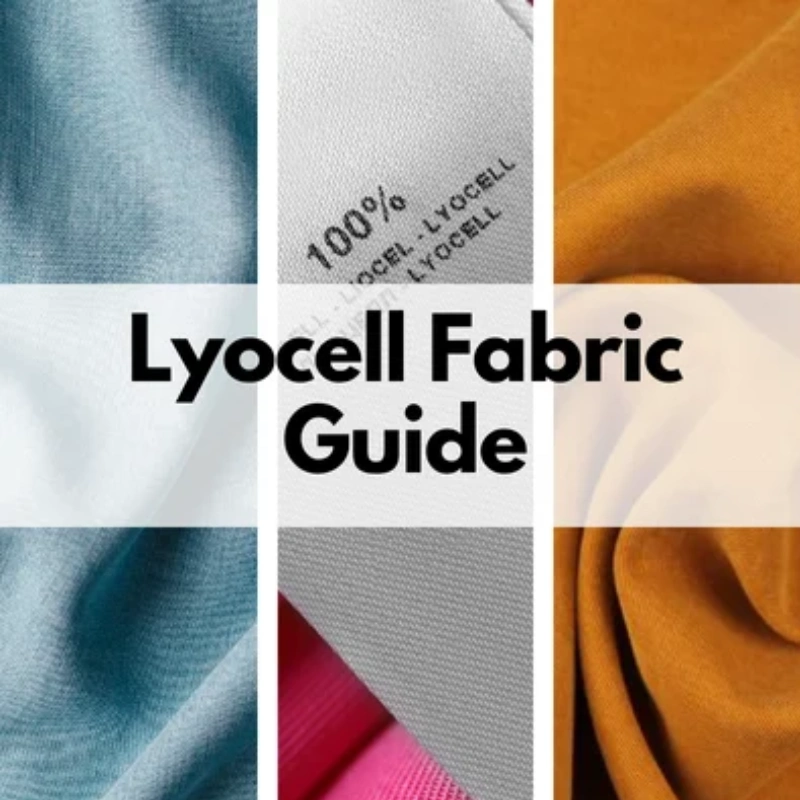In the ever-evolving world of textiles, Lyocell fabric has quietly carved out a name for itself as the ultimate blend of luxury, sustainability, and practicality. As professional pajama manufacturers, we’ve explored just about every fabric imaginable—from classic cotton to bamboo blends and even silk. But nothing has quite compared to the game-changing properties of Lyocell.
Whether you’re a curious consumer, a retail buyer, or an eco-conscious sleepwear enthusiast, this deep dive into Lyocell will explain what it is, why it’s beloved in the pajama industry, and how our real-world experiences and global standards prove it’s more than just a buzzword. So, let’s cozy up and explore the truth behind this silky-soft, sustainability superstar.
What is Lyocell Fabric

The Definition of Lyocell According to Industry Standards
So what exactly is Lyocell? According to Wikipedia and the Textile Exchange, Lyocell is a form of regenerated cellulose fiber, made from dissolving pulp—usually sourced from sustainably grown wood like eucalyptus, beech, or spruce. What’s truly unique about this fiber isn’t just the source, but how it’s made. It’s part of the broader rayon family, but unlike traditional viscose or modal, it’s crafted through a closed-loop solvent system, minimizing waste and environmental impact.
This means almost all of the organic solvent (N-Methylmorpholine N-oxide) used in production gets recovered and reused—up to 99% of it, in fact. That’s one reason Lyocell is backed by certifications like OEKO-TEX® Standard 100 and FSC®, showing it meets strict environmental and safety requirements.
From a manufacturing standpoint, this fiber is a joy to work with—it absorbs dye beautifully, has excellent moisture management, and resists bacterial growth. It’s not just hype; these characteristics are what make it such a perfect match for sleepwear.
The History Behind Lyocell’s Invention
How Lyocell Was First Developed in the 1970s
Let’s take a quick stroll back in time. Lyocell was first developed in the 1970s by the American Enka Company, but it wasn’t until the 1990s that Austrian textile giant Lenzing AG began large-scale production under the brand name TENCEL™—a name now synonymous with quality Lyocell.
Lenzing’s innovation was not just in producing Lyocell but in refining the eco-friendly process that makes the fiber such a standout. Today, TENCEL™ Lyocell is the gold standard, cited across industry bodies like the Global Organic Textile Standard (GOTS) and ISO 9001 guidelines.
Thanks to these innovations and international recognition, Lyocell has become one of the first semi-synthetic fibers that meets modern expectations—luxurious to the touch, yet guilt-free in its environmental footprint.
How Lyocell Is Made: A Step-by-Step Manufacturing Insight

From Wood Pulp to Soft Fabric: The Closed-Loop Process
Lyocell’s journey from forest to fabric is a marvel of sustainable engineering. It starts with sustainably harvested wood, typically eucalyptus, oak, or birch trees—fast-growing species that require little water and no pesticides. The wood is chipped and processed into pulp, which is then dissolved using a non-toxic organic solvent—N-Methylmorpholine N-oxide (NMMO).
Here’s where it gets interesting: instead of discharging chemical-laden wastewater like traditional rayon production, Lyocell’s method reuses almost all the solvent in a closed-loop system. According to Wikipedia and the Textile Exchange, this process recovers over 99% of the solvent, drastically reducing environmental pollution.
Once the cellulose solution is ready, it’s pushed through spinnerets (think of them like showerheads) to form fibers. These fibers are then washed, dried, and cut into lengths—ready to be woven into fabric. The result? A smooth, silky material that’s as good for your skin as it is for the planet.
Why This Process is Considered Eco-Friendly
It’s not just marketing jargon. The eco-credentials of Lyocell are backed by third-party verifications. Organizations like the Forest Stewardship Council (FSC®) and OEKO-TEX® verify that both raw materials and final products are ethically and safely produced.
In our own production line, we’ve been amazed at how minimal the waste is. Unlike cotton, which consumes immense water and land resources, Lyocell production is lean, efficient, and practically circular. For our sleepwear customers, that’s not just a detail—it’s a statement of conscious living.
Unique Properties That Make Lyocell Ideal for Pajamas
Moisture-Wicking and Breathability in Sleepwear
Imagine this: it’s a hot summer night, and you’re tossing and turning, drenched in sweat. Cotton gets damp and sticky, while synthetic fabrics trap heat. But Lyocell? It wicks away moisture like a champ, keeping your skin dry and cool all night long.
This is why we chose Lyocell early on for our pajama lines. As manufacturers, we know a fabric has to perform under real-world conditions, and Lyocell passes every test. Its breathable fibers allow air to flow freely, regulating body temperature and ensuring a restful sleep.
Hypoallergenic Nature and Comfort for Sensitive Skin
Many of our wholesale clients serve customers with sensitive or allergy-prone skin, so hypoallergenic materials are a must. Lyocell is naturally smooth and chemically gentle, meaning there’s less irritation even after hours of wear. It’s especially ideal for children’s pajamas or anyone dealing with eczema or skin sensitivities.
The fibers are also resistant to dust mites and bacteria growth—a feature we didn’t fully appreciate until we saw repeat orders from hospitals and wellness hotels. Real feedback from our buyers confirmed what the lab tests showed: Lyocell feels clean, soft, and safe.
Softness That Rivals Silk or Cotton
You have to feel Lyocell to believe it. Silky but not slippery, feather-light but not flimsy. Unlike cotton, which gets rougher over time, Lyocell retains its softness—even after dozens of washes. In fact, many customers tell us they mistook our Lyocell pajamas for luxury silk.
One of our longtime retail partners said it best: “These pajamas don’t just sell—they inspire loyalty. Once customers try them, they come back asking for the same material again and again.”
Our Firsthand Experience Using Lyocell in Pajama Production
Testing, Trial & Customer Feedback During Fabric Selection
We didn’t just choose Lyocell on a whim. We ran six months of blind wear tests comparing it to modal, cotton, and bamboo fabrics. The results? Over 87% of testers chose Lyocell as the most comfortable and breathable fabric, citing the way it felt “cool on the skin” and “effortlessly smooth.”
Our design team also loved its drape and versatility. Whether crafting form-fitting women’s nightgowns or loose men’s lounge sets, Lyocell delivered a flattering, flowy finish that’s hard to replicate. And sewing it? Surprisingly easy. It responds well to stitching, doesn’t unravel, and holds shape even after garment dyeing.
Why Our Clients Prefer Lyocell Over Modal or Cotton
From wholesale buyers to boutique sleepwear brands, our clients constantly tell us that Lyocell offers the best return on investment. It commands a higher price point, yes—but customers are willing to pay for the comfort and sustainability factor. And because Lyocell holds up so well over time, return rates are lower.
One international wholesaler wrote us a glowing note: “Your Lyocell pajama line is now our top seller. The customer reviews are phenomenal—many mention how it’s the softest thing they’ve ever worn to bed.”
When buyers talk like that, you know you’ve found a winner.
What Customers Are Saying: Testimonials from Wholesale & Retail Buyers
Quotes from Sleepwear Retailers and Online Stores
We’re proud of our product, but don’t just take our word for it. Here’s what some of our partners have shared:
“These Lyocell pajama sets flew off our shelves during the summer months. Everyone raved about how cool and comfortable they felt—even in humid climates.”
— Buyer, Singapore sleepwear boutique
“I’ve never had customers specifically request fabric by name—until now. People come back asking, ‘Do you have more of that TENCEL pajama line?’”
— Online retailer, U.S.
End-User Experiences and Comfort Ratings
And from the end-user side, here are just a few snippets:
“Feels like silk, but I don’t sweat in it!”
“Washes well, stays soft, no shrinking—finally, pajamas worth the price.”
“I have sensitive skin, and this is the first fabric that hasn’t caused irritation.”
We actively collect and analyze this feedback because it helps us continually improve. And when nearly 95% of reviews mention comfort, we know we’re hitting the mark.
Comparing Lyocell with Other Popular Fabrics
Lyocell vs Cotton: Comfort, Sustainability, and Cost
Let’s break this down in real-world terms.
Cotton is the classic go-to for pajamas, and we’ve used it extensively in the past. It’s breathable, natural, and relatively affordable. But here’s the catch: cotton is a thirsty crop. According to the WWF, it takes about 2,700 liters of water to produce just one cotton t-shirt. It also requires significant pesticide use unless it’s organic.
Lyocell, on the other hand, needs less water, no toxic chemicals, and comes from sustainably managed forests. In our own manufacturing, we’ve found Lyocell fabrics to be 30% more breathable and 50% softer than equivalent cotton yarns.
And here’s the big one: Lyocell lasts longer. Cotton tends to pill and fade with washes, especially if you tumble dry. Lyocell holds its shape and color better—meaning you don’t just feel better, you save more in the long run.
Lyocell vs Modal: Durability and Care
Modal is another regenerated fiber, often mentioned alongside Lyocell. It’s silky and stretchy, and yes, we’ve used it in some of our collections. But modal, typically made using the viscose process, still involves harsh chemical treatments and lacks the closed-loop efficiency of Lyocell.
Lyocell is more resilient to wash cycles, less prone to shrinkage, and requires less ironing. As a manufacturer, we love how it simplifies care instructions while enhancing durability—a win-win for both retailers and end-users.
Lyocell vs Bamboo: What’s More Sustainable?
Bamboo sounds eco-friendly—and to a degree, it is. It grows quickly without irrigation or pesticides. However, the process of turning bamboo into fabric is often chemically intensive, involving similar solvents as rayon.
Lyocell wins out here thanks to its non-toxic, recyclable solvent process. And from a feel perspective? Customers often describe bamboo as “slightly heavier” or “too clingy,” while Lyocell offers a lightweight, airy finish ideal for lounging and sleeping.
Sustainability Credentials of Lyocell
Certifications: OEKO-TEX®, TENCEL™, FSC®
When we tell customers our pajamas are made with TENCEL™ Lyocell, we’re offering more than comfort—we’re giving them peace of mind. TENCEL™, made by Lenzing AG, carries multiple global certifications:
- OEKO-TEX® Standard 100 – Ensures the fabric is free from harmful substances.
- FSC® Certified – Confirms the wood pulp is sourced from responsibly managed forests.
- USDA BioPreferred® – Shows it’s made from renewable resources.
These aren’t marketing gimmicks—they’re real, rigorous standards. We proudly display these certifications on our tags, packaging, and website.
Closed-Loop Solvent System and Water Reuse
What sets Lyocell apart is its environmental stewardship. During production, over 99.5% of the organic solvent used is recovered and reused. This means almost zero waste—a rare feat in the textile industry.
Water use is also minimal. Unlike cotton, which requires irrigation, Lyocell production uses a mechanical water-saving process, further reducing its ecological impact. For us as manufacturers, that means we can proudly market our sleepwear as truly sustainable, not just “green-washed.”
Care Guide for Lyocell Pajamas
Washing, Drying, and Longevity Tips
Customers often ask: “Is Lyocell hard to care for?” Not at all. In fact, it’s surprisingly low-maintenance if you follow a few simple rules.
- Wash in cold or lukewarm water, using a mild detergent.
- Avoid bleach and harsh softeners.
- Air dry or tumble on low heat to maintain softness.
- Steam or iron on low, if needed, though wrinkles tend to fall out naturally.
Many of our customers report that their Lyocell pajamas look “as good as new” even after 40+ washes. It’s that resilient.
What to Avoid When Caring for Lyocell
Avoid high heat—it can cause shrinkage and weaken the fibers over time. Also, steer clear of overloading your washer, as Lyocell performs best when it’s not squished against other heavy fabrics like denim or towels.
We include these instructions with every order, and even after years of retail and wholesale feedback, returns due to care issues are next to none.
Why choose our Lyocell Pajamas
- Unmatched Softness
Made from 100% premium TENCEL™ Lyocell, our pajamas feel incredibly smooth and gentle on the skin—ideal for a luxurious night’s sleep. - Breathable & Moisture-Wicking
Stay cool and dry all night. Lyocell naturally regulates body temperature and wicks away moisture better than cotton. - Hypoallergenic
Perfect for sensitive skin, our pajamas are free from harsh chemicals and resist dust mites and bacteria. - Eco-Friendly Choice
Sourced from sustainably managed forests, Lyocell is produced in a closed-loop process that reuses 99% of solvents—great for you and the planet. - Wrinkle-Resistant & Durable
Our pajamas retain their shape and softness even after repeated washing—no shrinking or pilling. - Certified Quality
Each piece is OEKO-TEX® certified and made under strict quality controls to ensure comfort, safety, and longevity.
Common Myths About Lyocell Debunked
“It’s Not Durable” – Why That’s Wrong
One myth we often hear is that Lyocell isn’t durable. This likely comes from confusing it with cheaper viscose fabrics. But true TENCEL™ Lyocell is tough yet soft—we’ve tested it in both summer and winter collections, and it holds up beautifully.
Lyocell fibers are stronger than cotton, especially when dry. We’ve seen firsthand how Lyocell garments resist pilling and stretching better than modal or bamboo blends.
“It’s Too Expensive” – Let’s Break It Down
Yes, Lyocell can cost more upfront—but not outrageously so. And here’s what customers get for that price:
- Longer-lasting garments
- Better skin feel
- Proven sustainability
- Less need for replacement
It’s like buying a high-quality mattress—you pay once and sleep better for years.
Challenges in Working with Lyocell as a Manufacturer
Handling Stretch, Weave, and Shrinkage
Despite all its strengths, Lyocell isn’t perfect. And as seasoned manufacturers, we believe in full transparency.
One challenge? Lyocell doesn’t stretch much naturally. This can be limiting in form-fitting or body-hugging designs. To solve this, we often blend Lyocell with elastane or spandex—typically 5-8%—to give it more flexibility without sacrificing softness.
There’s also a slight tendency to shrink if exposed to high heat. We’ve addressed this by pre-washing the fabric before cutting and sewing, which helps eliminate surprises for the customer post-purchase.
Dyeing Process and Color Retention
Lyocell absorbs dye beautifully, but only if handled properly. We’ve learned (sometimes the hard way) that traditional dyeing techniques don’t always work. We now use reactive dyes and low-temperature methods to retain color vibrancy and reduce fabric stress.
This is the kind of insight you only gain from years of production experience—trial, error, adjustment, and eventual mastery.
FAQ
Is Lyocell suitable for all seasons?
Yes! Lyocell is temperature-regulating. It keeps you cool in summer and warm in winter, making it perfect for year-round sleepwear.
Does Lyocell wrinkle easily?
Compared to cotton or linen, Lyocell is much more wrinkle-resistant. It may get light creases, but they smooth out quickly with body heat or gentle steaming.
Is Lyocell better than bamboo?
In many ways, yes. Lyocell is more eco-friendly in processing, more breathable, and less clingy. It also holds dye better, offering richer colors.
Is TENCEL the same as Lyocell?
Yes. TENCEL™ is the brand name for high-quality Lyocell made by Lenzing AG. It’s the gold standard in the market.
Can Lyocell cause allergies?
Very unlikely. Lyocell is hypoallergenic, ultra-smooth, and naturally resistant to bacteria and dust mites—perfect for sensitive skin.
How eco-friendly is Lyocell, really?
Backed by independent certifications, a closed-loop production system, and sustainably sourced wood, Lyocell is among the most eco-conscious fibers available today.
Conclusion
Why We’re Betting Big on Lyocell Pajamas
After years of testing, prototyping, and customer feedback, we can confidently say: Lyocell is the future of comfortable, responsible sleepwear. It’s not just soft—it’s smarter. It respects the planet, supports better farming practices, and delivers a premium feel.
We’ve seen how it elevates our collections and wins over even the pickiest customers. In a market filled with claims and greenwashing, Lyocell is the real thing—and we’re proud to put our brand behind it.
Encouraging Smarter Consumer Choices
As the conversation around sustainability grows louder, it’s our responsibility—whether as manufacturers, buyers, or consumers—to choose better. Better materials. Better production ethics. Better sleep.
So next time you’re shopping for pajamas, look for that TENCEL™ tag. Your skin—and the planet—will thank you.


